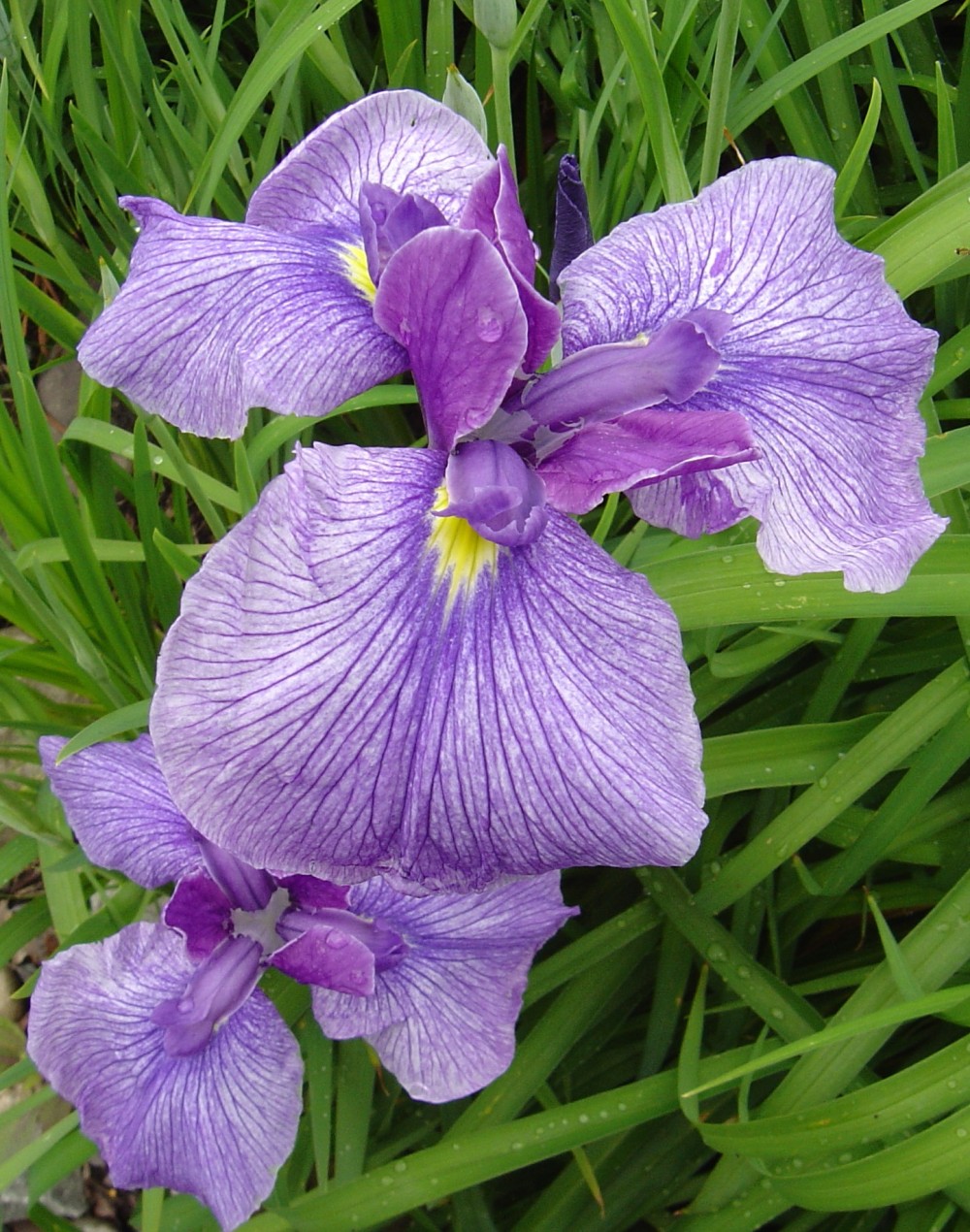In my garden there are five ponds, four that are one hundred fifty square feet and smaller, and a large pond that is nearly fifteen hundred square feet that I call the “swimming pond”, though I do not swim, only float in it. Only the swimming pond is in full sun, and here is the greatest diversity of plants; waterlilies, variegated cattail, sweetflag, pitcher plants, a variety of rushes and irises, and annual elephant ears, papyrus, and canna lilies grow in shallow water in small gravel that filters the recirculating pond water.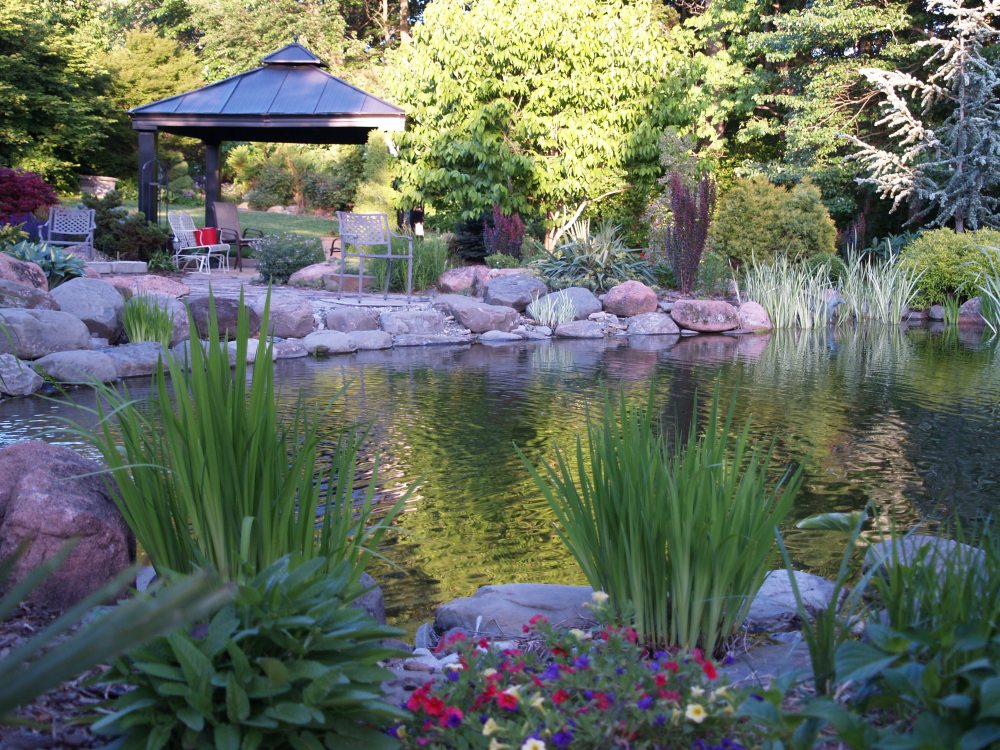
Water plants will grow as well in sun or shade, but most will not flower as prolifically without a half day of sun. There is no more splendid bloom in the garden than Japanese iris (Iris ensata) that are blooming today in several inches of water, and nearby in damp soil and standing water of a drainage swale along with the Siberian iris ‘Caesar’s Brother’ (below) that has faded in the past week. 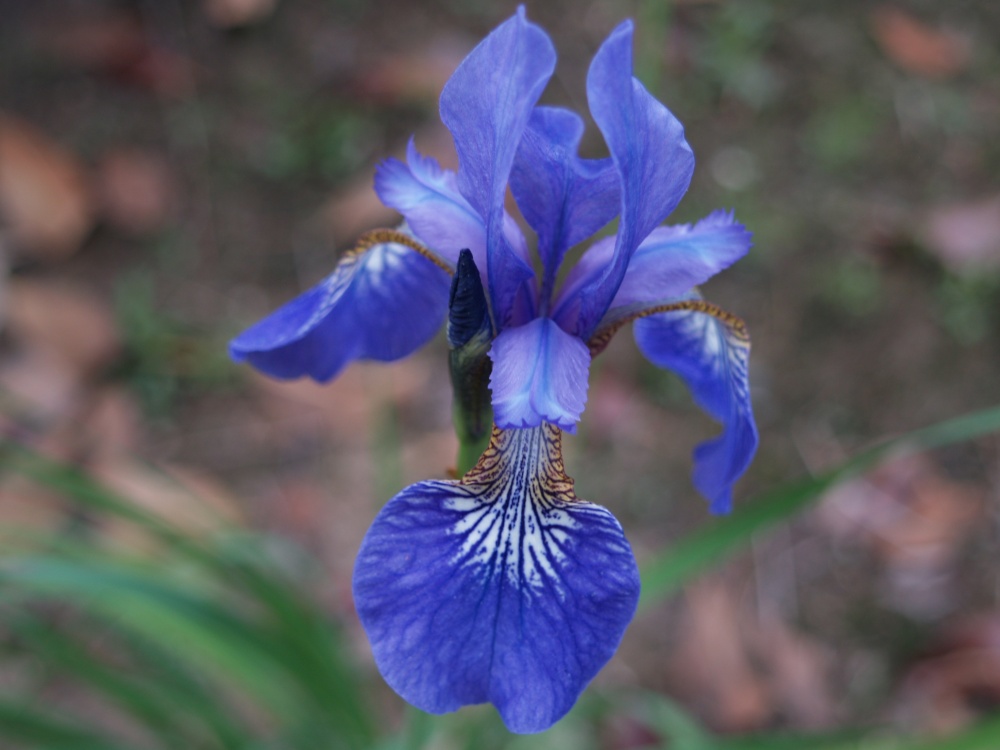
I have heard that Japanese iris can be finicky, and I suppose that in dry conditions this could be so, but in constant dampness or in shallow standing water they are quite carefree, requiring only a moment of clean up of the past year’s foliage. I have planted the Japanese iris directly into small pockets of soil, or just in fine gravel, and the clumps spread at a moderate pace, unlike many aquatics that must be restrained by pots.
There are a few hundred varieties of Japanese iris, and dozens commonly available. I have yet to see one that is not spectacular in bloom, and so my collection continues to expand. The earliest bloomer in my collection is the variegated Japanese iris, but closely followed by Iris ‘Gracieuse’ (below). The upright sword-like leaves are taller than most, and in the pond this gives somewhat the appearance of cattails when not in bloom, but without the bother that they will spread out of control. 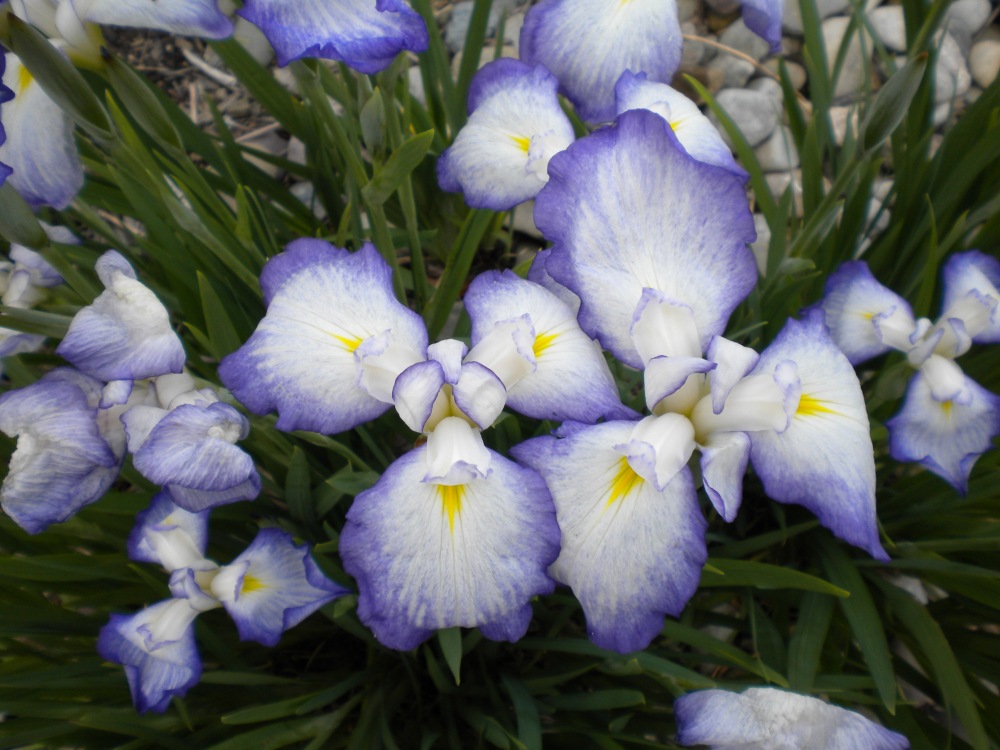
‘Lion King’, (below) is also tall, and the blooms are the largest of the varieties in my garden.
‘Variegata’ (below) is the earliest in bloom, and the green and white striped leaves are quite ornamental after flowering. In dry soil iris foliage will wither in the heat of late summer, but in damp soil and shallow water the leaves remain erect and look fresh until frost.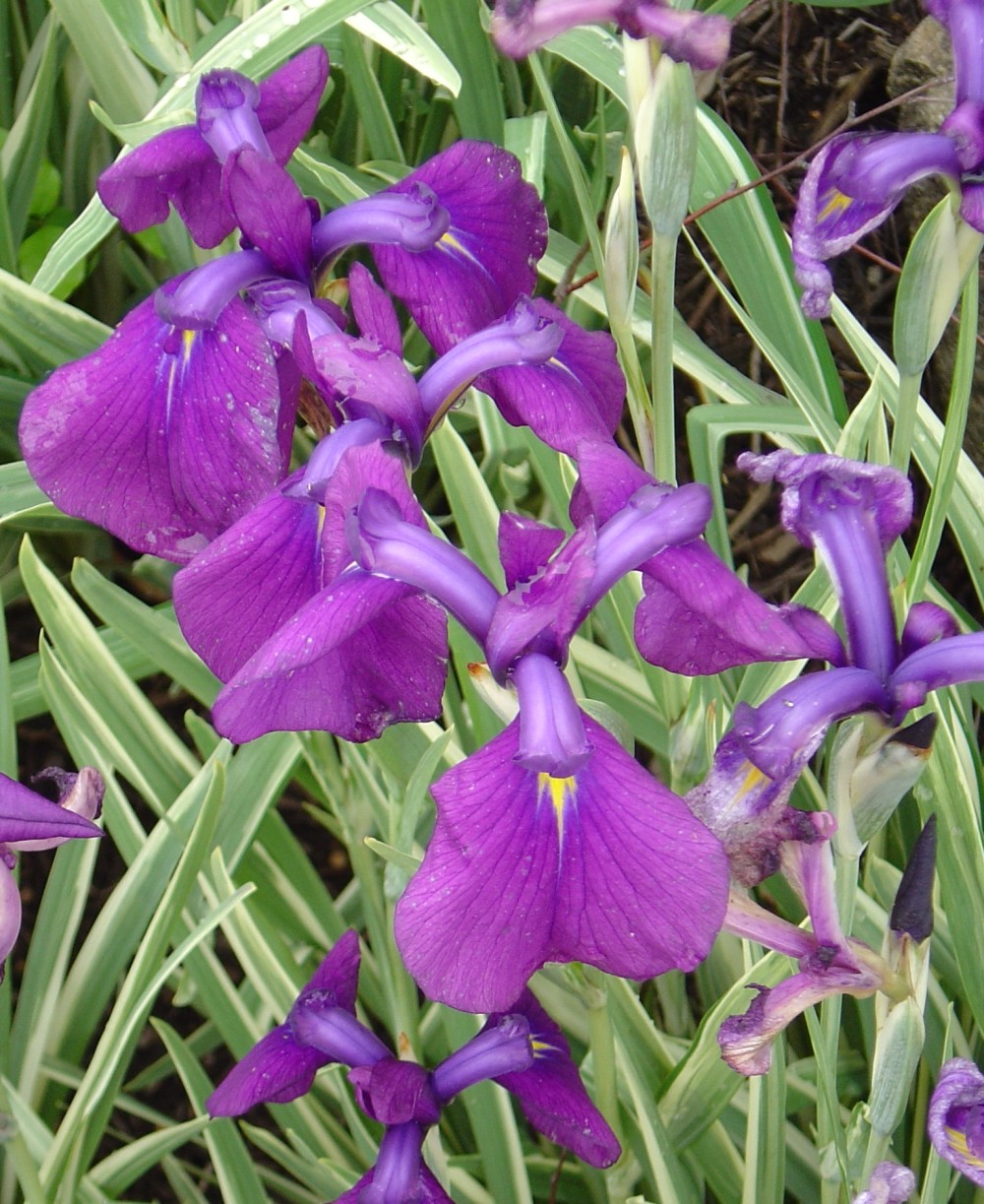
There are a few other Japanese iris in the garden, but of course I am terrible at keeping track of such things, so their names are unknown, but you should be assured that there are no bad choices.